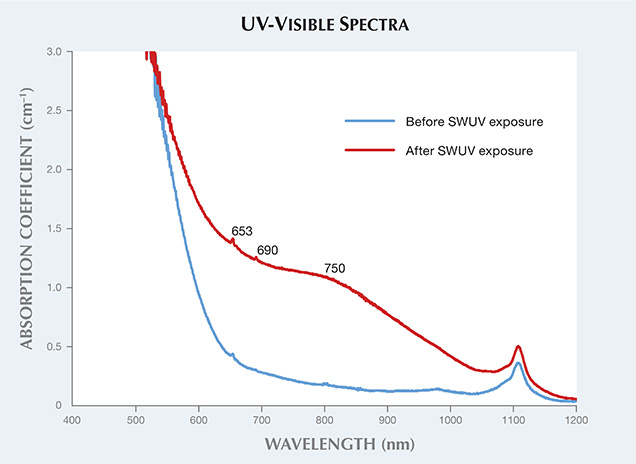Tenebrescent Zircon

Tenebrescence, the phenomenon of reversible photochromism, is common in gemstones such as hackmanite (a variety of sodalite) but unusual in zircon. In September 2011, GIA examined two zircons from central Australia that turned orange in darkness and faded to near colorless when exposed to light (S.F. McClure, “Tenebrescent zircon,” Winter 2011 G&G, pp. 314–315). This zircon displayed a different phenomenon: Its reddish orange color did not fade under fluorescent lighting or fiber-optic light. Exposure to short-wave UV (SWUV) caused it to darken. The reddish orange component gradually diminished, and the stone appeared brown (figure 1, center). There was no further change after 30 minutes.
The UV-visible spectrum after SWUV exposure showed a significant increase in absorption in the 590–750 nm range, reducing transmission of the orange to red color and making the stone darker (figure 2).

Figure 2. After 30 minutes of SWUV exposure, the zircon’s absorption spectrum revealed more absorption in the 590–750 nm range, which relates to an orange to red color.
As noted above, the reaction is reversible. The reddish orange color returned when the stone was stored in the dark at room temperature (see figure 1, right). The color change was obvious in the first 10 to 20 hours. After that, no further color change was observed.To determine whether the process was repeatable, the stone was again subjected to SWUV. Once again the reddish orange color darkened in tone.
In summary, the reddish orange zircon was darkened by short-wave UV exposure, and the color returned when the stone was stored in the dark. The darkening reaction was much faster than the recovery. Further studies incorporating other conditions that might affect the rate of color modification in tenebrescent zircon are being conducted.



